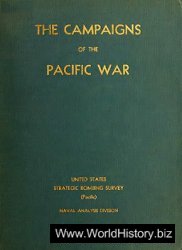Following the American settler rebellion, war between Britain and France would have immediate repercussions in India during the 1770s. During the two decades since Plassey, in 1757, the rulers of the eastern states had observed the British consolidating their power: in Bengal from their base at Calcutta, and in the Carnatic from their garrison at Madras. On India’s western shores, the British had a foothold at Bombay, the gateway to the extensive territory of the Maratha Confederacy, a loose and often warring alliance of related Hindu chieftains that stretched across the whole of central India. These lands were the legacy of the seventeenth-century conquests of Shivaji, a Maratha chief who had seized them from the Mughal empire. The Marathas at Poona had played little part in the early drama of imperial consolidation, and throughout the resistance wars of Haidar Ali of Mysore they had negotiated with the British and remained neutral.
Now they perceived that it might be to their advantage to ally themselves with the French, a tempting prospect that soon led to internal quarrels among the Maratha chiefs. Nana Farnavis, who was friendly to the French, was one; Ragunath Rao (or Ragoba), who secured an alliance with the British, was another.
In December 1778, outside Poona, some 50,000 Maratha soldiers commanded by Nana Farnavis, armed with rockets, cannon and muskets, harassed a British column as it climbed up from Bombay. The British had sent a two-pronged expedition to Poona in an ill-planned venture to defend the claims of their ally Ragoba against those of Nana Farnavis. One army had been despatched from Calcutta to march across the entire width of India; a smaller force of 4,000 men had advanced inland over the hills from Bombay, slowed down by its baggage trains drawn by 19,000 bullocks.
It was this second force that Nana Farnavis’s army confronted in January 1779, outside Poona. Aware that they were greatly outnumbered, the British had planned to slip away in the night, jettisoning their heavy guns and burning their stores; but the Marathas attacked before dawn, and the British suffered large casualties. The survivors straggled away to the village of Wargaon, where they surrendered. The Marathas were to fight with the British over a period of forty years, and in this, their first encounter, they had been victorious.
The Marathas obliged the British to sign a humiliating document, the Convention of Wargaon. The British were forced to send back the army advancing from Bengal, to give up the territories and revenues they had acquired from Ragoba, and to surrender two hostages as a guarantee.
Two years later, in October 1781, the same month as the British defeat at Yorktown, the Marathas obliged the British to sign a second humiliating peace agreement, after a further successful attack, in April 1971, on another British army as it fell back from Poona to Bombay, with the loss of 500 men.
In the Carnatic, after a truce that had lasted for more than a decade, the forces of Tipu Sultan posed a fresh threat to the British. Tipu, the ‘Tiger of Mysore’, was the son of Haidar Ali, the Mysore ruler who had driven the British back to the gates of Madras in an earlier decade. In September 1780, Tipu secured a notable victory over a British army, at Conjeveram, near Madras (sometimes called the battle of Pollilur), in what was the most serious defeat of the time suffered by the British at the hands of an Indian army; Tipu would later decorate his palace at Seringapatam with murals of his victory at Conjeveram.
This was the start of a four-year struggle for supremacy in south India. The Mysore army destroyed a British force of 4,000 men led by Colonel William Baillie; seventy British officers were killed or wounded. Two hundred Europeans were captured and held in the prisons of Mysore for many years, where several, including Baillie, died.
Tipu was the most formidable opponent encountered by the British in their long march to conquer India. The state of Mysore stood alone in the 1780s as a bulwark against the British advance into central India - and Britain’s eventual supremacy. Tipu resisted the encroachments of the Christian British on India’s Islamic realm for nearly two decades. In his prime, he was the most feared enemy of the Empire, but the nineteenth-century historian of India James Mill left a fair description of him: ‘Rather above the middle size, and about five feet eight inches high, Tipu had a short neck and square shoulders, and. . . bordered on corpulency; but his limbs were slender, and his feet and hands remarkably small. His complexion was brown, his eyes large and full, his eyebrows small and arched, his nose aquiline; and in the expression of his countenance there was a dignity, which even the English, in spite of their antipathy and prejudices, felt and confessed.’1
Tipu survives in the imperial memory as a famous villain, a monster of cruelty, and a bloodstained tyrant. He was all of these things; but by the standards of his time, he was a Napoleon in his pursuit of efficiency and progress. He was popular with both his Hindu and Muslim subjects, and to later generations of nationalists he was a hero. Only at the end of the twentieth century did his role begin to be reconsidered, as Hindu fundamentalists criticised his policy of Islamisation, perceiving him as a fanatical Muslim persecutor of Hindus.
Tipu was a competent general and, like his father, was one of a generation of rulers who had learned their military strategy, European-style, from the French. The British complained about the perceived harshness of native rulers, but their real objection to Tipu was his alliance with France. In the years after the French Revolution he picked up the rhetoric of the time, and liked to be called ‘Citizen’ Tipu.
As Tipu’s army celebrated their victory at Conjeveram, the British reflected on the disaster that had befallen them. The man held most responsible was not Colonel Baillie but General Hector Munro, the victor at Buxar in 1764 and enthusiast for ‘cannonading’ mutinous sepoys from guns. Munro had fled in panic to Madras, throwing away his stores and ditching his heavy guns.2 Worse than defeat for the British was the perceived humiliation of the captives held in prison in Seringapatam. Penderel Moon records how
A number of English prisoners belonging to the ranks, many of whom were mere boys in their teens, were persuaded or forced to be circumcised into Islam, and then, with slave rings in their ears, were trained as janissaries or turned into palace servants or even dancing boys. Tipu. . . retained a number of prisoners of this class, thereby exciting intense resentment among the English.3
Years later, when the Mysore state again came under British attack in 1792, several of these English dancers were killed.
Two years after Conjeveram, in February 1782, Tipu Sultan caused the British to suffer a further disaster, to the south of Pondicherry. With French reinforcements, he attacked a British force led by Colonel Brathwaite, encamped with 1,600 sepoys and nearly 100 Europeans to the south of the Coleroon River. After a desperate fight, the colonel surrendered, with nearly all his officers killed or wounded. Brathwaite and a few survivors joined Baillie in prison in Seringapatam.
Later that year Tipu faced a new threat from the west, as General Matthews, the British commander at Bombay, sailed down the Malabar coast with plans to seize Tipu’s fort at Bednore, believed to be stuffed with treasure. Tipu’s commanders made a tactical retreat from the fort, leaving it to be captured by Matthews’ soldiers in January 1783. The British subsequently seized Bednore, Anantpoor and the port at Mangalore.
Tipu launched a counter-attack from Seringapatam, recapturing Bednore in May. British officers were marched off in chains. Mangalore was recovered by Tipu in January 1784 after a long siege.
On 11 March 1784, Tipu’s resistance war was brought to a temporary close. With Britain and France at peace after the conflict in America, the Indians lacked an inter-imperial conflict from which they might beneflt. Tipu signed a treaty with the British at Mangalore, and, as in previous such peace deals, the two sides swapped the territory they had seized and released their prisoners. ‘So ended at length this weary and desolating war’, commented Colonel Fortescue, ‘which so nearly cost us the possession of India.’4 Within a decade, it would start up all over again.




 World History
World History









